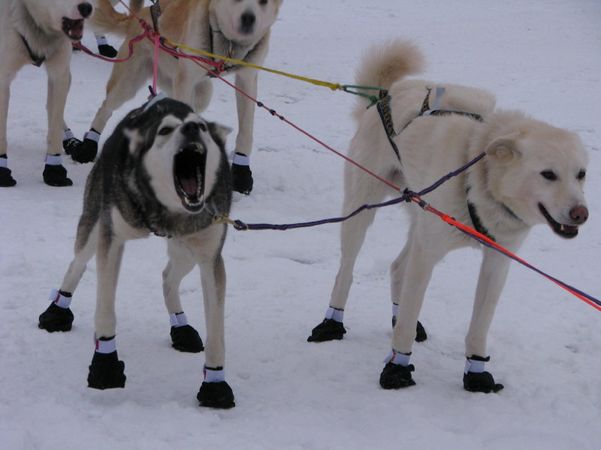Iditarod
Racing dogs at Iditarod, Alaska 2014
Iditarod - The last great race(r) 2014: the greatest challenge up to the finish: » iditarod.com
At Martin Buser's 'Happy Trails Kennel' (Big Lake, near Anchorage, Alaska) Prof. Michael Davis (Comparative Exercise Physiology Laboratory, Oklahoma State University, USA) conducts a long-term collaboration with Martin's team to study and train the Alaskan dogs in preparation of long-distance races, the most challenging of which is the 1,100 mile Iditarod race. Martin Buser is 4 times champion of the Iditarod, with a scientifically oriented interest in the study of the genetics and physiology of the dogs that goes far beyond the race.
The line of mixed-breed Alaskan huskies of Martin incorporates sprint-dog lines and is selected and trained as much for long-distance endurance as for speed - and happiness. "Happy dogs perform better and make racing more fun" (Martin Buser).
In January and March 2014, Mike Davis and Katherine Williamson teamed up with Erich Gnaiger and Verena Laner (Medical University of Innsbruck and OROBOROS INSTRUMENTS), Robert Boushel (Swedish School of Sport and Health Sciences, Stockholm, SE), and Benjamin F. Miller and Karyn Hamilton (Colorado State University, US) to focus on mitochondrial respiratory function in the skeletal muscle of the dogs. With a Power-O2k approach using six OROBOROS O2k, these mitochondrial studies are conducted at the beginning of the intensive training period and after the Iditarod race, considered as the final stage of the most intensive endurance training.
» Mitochondrial pathways and respiratory control. An introduction to OXPHOS analysis.
















